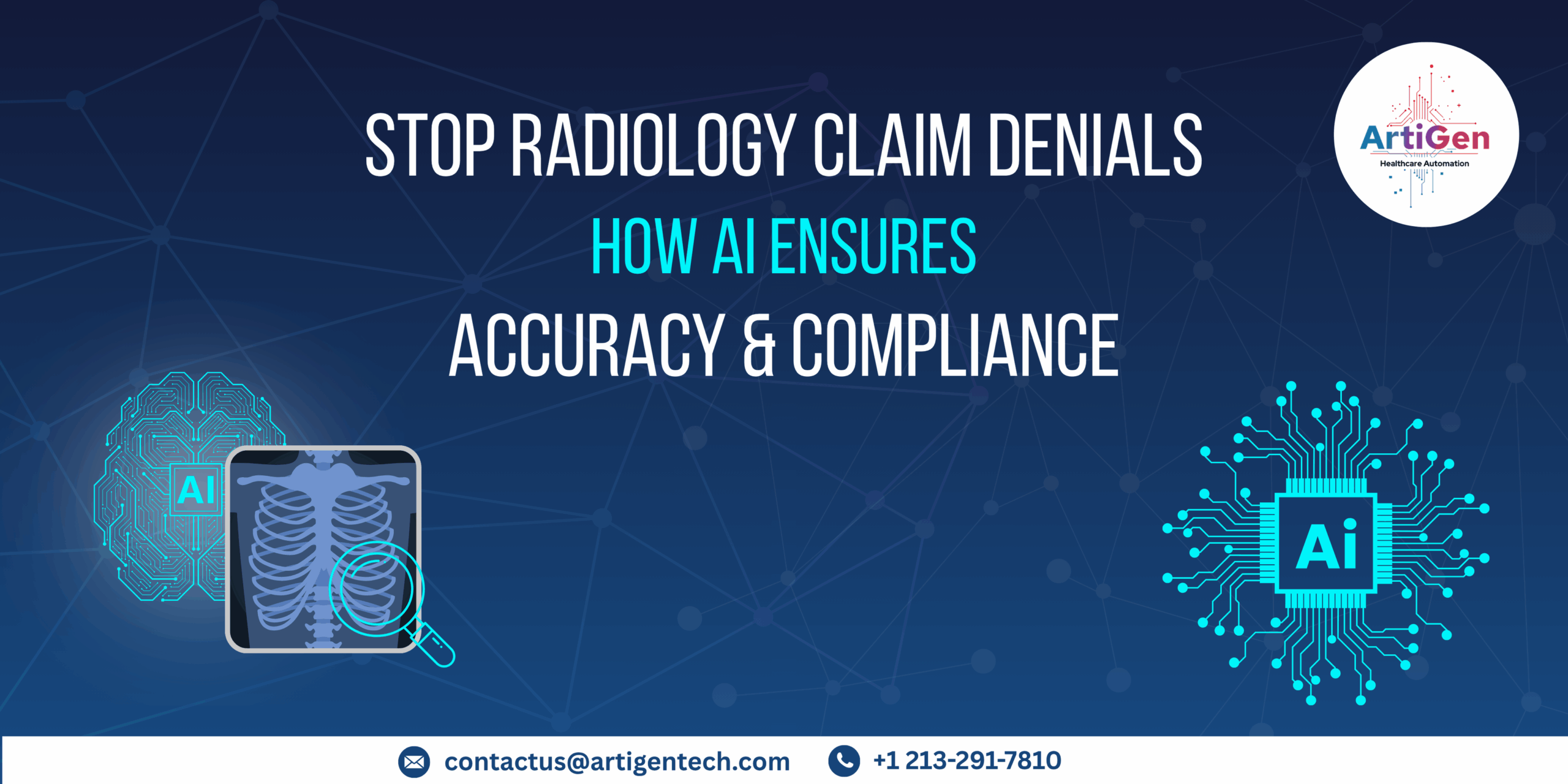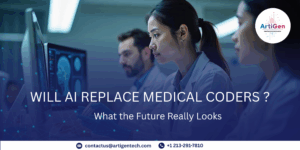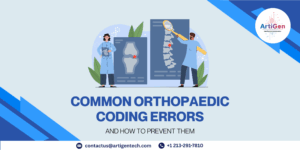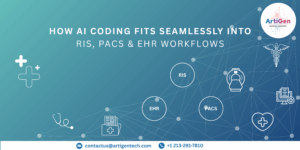

Reducing Claim Denials in Radiology: Using AI to Enforce Compliance & Medical Necessity
Radiology departments experience more difficulties in maintaining compliance and certifying claim accuracy in the modern medical ecosystem. In order to attain accuracy, efficiency, and financial stability, radiology providers are looking for artificial intelligence (AI). In radiology as payer regulations grow more complicated and documentation requirements increase, hospitals are using advanced analytics to reduce human error and promote consistency in claim submissions as a result of the quick rise of AI medical coding and in radiology automation.
AI predictive analytics radiology solutions, which combine Machine learning (ML), natural language processing (NLP), and AI-powered coding systems, are at the very core of this evolution. In order to ensure that compliance and revenue cycle performance go hand in hand, these technologies are changing the way healthcare organizations handle automated prior authorization, medical necessity automation, and claim denial prevention.
Understanding the Challenge: Denials in Radiology
Claims in radiology are among the most commonly rejected because of unclear documentation, incorrect radiology CPT code mapping, payer specific guidelines, and policy inconsistencies between payers. It can be challenging to identify small variations or missing modifiers prior to submission in traditional radiology billing and coding workflows as they frequently rely on manual validation.
AI in radiology offers an innovation in this scenario. Hospitals can eliminate routine administrative tasks, ensure adherence to ICD-10 radiology coding guidelines, and automatically verify code accuracy by integrating radiology AI coding tools into the RCM workflow.
While automated coding assistance guarantees that high-volume claims are processed accurately, the integration of AI medical coding systems frees up coders to concentrate on complicated cases.
How AI Reinforces Compliance and Accuracy
Artificial intelligence (AI) solutions use optical character recognition (OCR), natural language processing (NLP), and machine learning (ML) to decipher clinical documentation from electronic health records (EHRs). In order to ensure compliance with payer-specific compliance regulations and radiology coding guidelines, these AI coding solutions translate textual findings, impressions, and procedures to the most appropriate radiology CPT procedure coding and ICD-10 diagnosis coding updates.
AI in radiology does more than just extract text; it also determines medical intent, finds clinical elements that are missing, and uses predictive coding analytics to validate them against payer guidelines. Hospitals can validate claim accuracy in almost real-time by combining RCM automation software with healthcare automation tools.
This approach facilitates ongoing revenue cycle optimization and substantially reduces the need for billing corrections and claim resubmission adjustments.
Technical Workflow: How AI Operates in Radiology RCM
To illustrate the data flow, the following table summarizes how automation interacts with radiology systems throughout the RCM process:
Stage | Process | AI Functionality | Tools/Technology Used |
1. Data Ingestion | EHR and PACS data extraction | OCR reads patient data, diagnosis reports, imaging metadata | NLP engines, OCR frameworks |
2. Documentation Parsing | Interpretation of physician notes | AI medical coding identifies procedures and correlates with radiology CPT coding and ICD-10 codes | CAC systems, radiology coding software |
3. Claim Validation | Rules-based claim scrubbing | Automated claim scrubbing and claim denial prevention applied | RPA bots, RCM automation software |
4. Medical Necessity Verification | Compliance cross-checking | Medical necessity automation aligns documentation with client requirements | Healthcare RPA solutions, AI logic engines |
5. Submission & Feedback Loop | Auto-submission and error feedback | Predictive models detect denial likelihood and recommend corrections | Predictive analytics radiology, ML models |
Radiology automation is made possible by this architecture, which promotes speed and compliance while preserving human oversight in crucial decision-making.
Enhancing Coding Efficiency through Automation
Large amounts of radiology data can be processed at unprecedented speed by AI powered coding tools. These systems convert complicated imaging results into structured codes that adhere to radiology coding guidelines with the help of automated coding assistance.
Contextual NLP is used, for instance, by the AI engine in interventional radiology coding to identify similar procedures and implement the right modifiers. In a similar vein, ultrasound CPT codes are automatically determined from structured report data, minimizing missed reimbursements and decrease dependence on humans.
Radiology medical coding solutions powered by AI healthcare automation continuously learn from previous claim results, improving code prediction accuracy and preventing recurring denials. This ensures that each claim increases future accuracy by creating a closed-loop feedback model within revenue cycle management.
ArtigenTech Conrad AI: Radiology Coding Automation for Accurate Compliance
For healthcare organizations aiming to modernize their billing workflows, Conrad AI for radiology coding automation provides a robust platform that streamlines radiology medical coding and ensures adherence to the latest radiology coding guidelines. As an all-in-one radiology coding software solution, Conrad AI offers automated workflows, precise radiology CPT coding, and comprehensive radiology coding solutions that reduce claim denials and optimize revenue cycles. By leveraging intelligent algorithms and real-time validation, Conrad AI allows coders to focus on complex cases while maintaining full compliance with radiology medical coding standards. Discover how Conrad AI can transform your radiology coding processes
Automated Prior Authorization and Denial Prevention
In radiology, denied or delayed authorizations are one of the main reasons for lost revenue. This difficulty is made simpler by AI-enabled automated prior authorization procedures in radiology.
Through direct EHR integration, AI-driven systems perform:
- Eligibility verification using healthcare RPA solutions
- Pre-authorization checks using payer-specific rule sets
- Documentation validation aligned with medical necessity automation
By automating these steps, healthcare providers can prevent common causes of denials such as missing patient eligibility, invalid radiology CPT coding mappings, or insufficient clinical justification.
Additionally, claims are ranked by risk level using predictive analytics radiology models, which evaluate the likelihood of denial prior to submission. This improves overall denial management radiology results by assisting billing teams in prioritizing high-risk claims.
Predictive Analytics: Turning Data into Action
In order to identify repeated denial patterns, AI-driven predictive coding analytics models analyze historical data from millions of radiology claims. These systems determine whether denials are the result of payer policy changes, inconsistent radiology CPT coding, or inadequate documentation.
AI medical coding systems use continuous feedback loops to adjust their models in response to results, thereby improving themselves. Hospitals thus benefit from quantifiable improvements in revenue cycle automation and medical coding accuracy.
A proactive denial prevention strategy is created by combining AI healthcare automation and radiology AI coding, which finds problems before the claim is even made. This facilitates long-term revenue cycle optimization in addition to increasing compliance.
RCM Integration and Interoperability
Integration between EHR, RIS, and PACS systems is necessary for integrating AI systems into the radiology billing and coding workflow. FHIR-based data exchange is the foundation of contemporary RCM automation software, guaranteeing seamless communication between the clinical and billing layers.
AI in radiology, for instance, can automatically verify that the right Z-codes or modifiers are present by cross-walking the documented image indications in the EHR with the ICD-10 radiology coding guidelines.
Healthcare automation tools enable coders to supervise, validate, and verify final claims without the need for human intervention by means of this end-to-end automation. As AI coding solutions manage data-heavy processes, coders become AI supervisors who keep an eye on compliance.
Scalable radiology medical coding systems that guarantee steady claim success rates are built on this kind of synergy.
The Future of Radiology AI and Compliance
Cognitive systems with adaptive learning capabilities will be the focus of the next stage of radiology automation. Radiology departments will be able to submit claims for low-complexity procedures with zero touches thanks to AI healthcare automation that is integrated into every touchpoint, from documentation capture to denial management radiology.
Real-time predictive analytics radiology dashboards will be utilized by advanced radiology AI platforms to offer detailed insight into compliance metrics, denial trends, and coder productivity. Healthcare executives will be more able to make data-driven decisions that improve clinical and financial results thanks to these insights.
Moreover, will AI replace radiology coders? The answer is no; rather, AI will act as a clever co-pilot in radiology, enhancing human knowledge with unparalleled analytical accuracy.
Conclusion: A Smarter Path to Radiology Compliance
The integration of human expertise with advanced technology will define the future of radiology medical coding. Healthcare organizations can remove revenue leakage, guarantee compliance, and improve documentation accuracy by integrating AI medical coding, automated coding assistance, and medical necessity automation.
Hospitals can move from reactive to proactive revenue management with AI in radiology, predictive analytics radiology, and automated prior authorization. Automation in radiology is now essential for providing effective, error-free, and compliant healthcare; it is no longer an option.
The healthcare sector is about to enter a new era of revenue cycle optimization, where automation increases clinical trust, lowers denials, and enforces compliance. This is made possible by AI-powered coding, healthcare RPA solutions, and RCM automation software.
Radiology professionals who use AI coding solutions and radiology medical coding guidelines will not only ensure reimbursement accuracy in this changing digital environment, but they will also reshape intelligent healthcare operations in the future.






